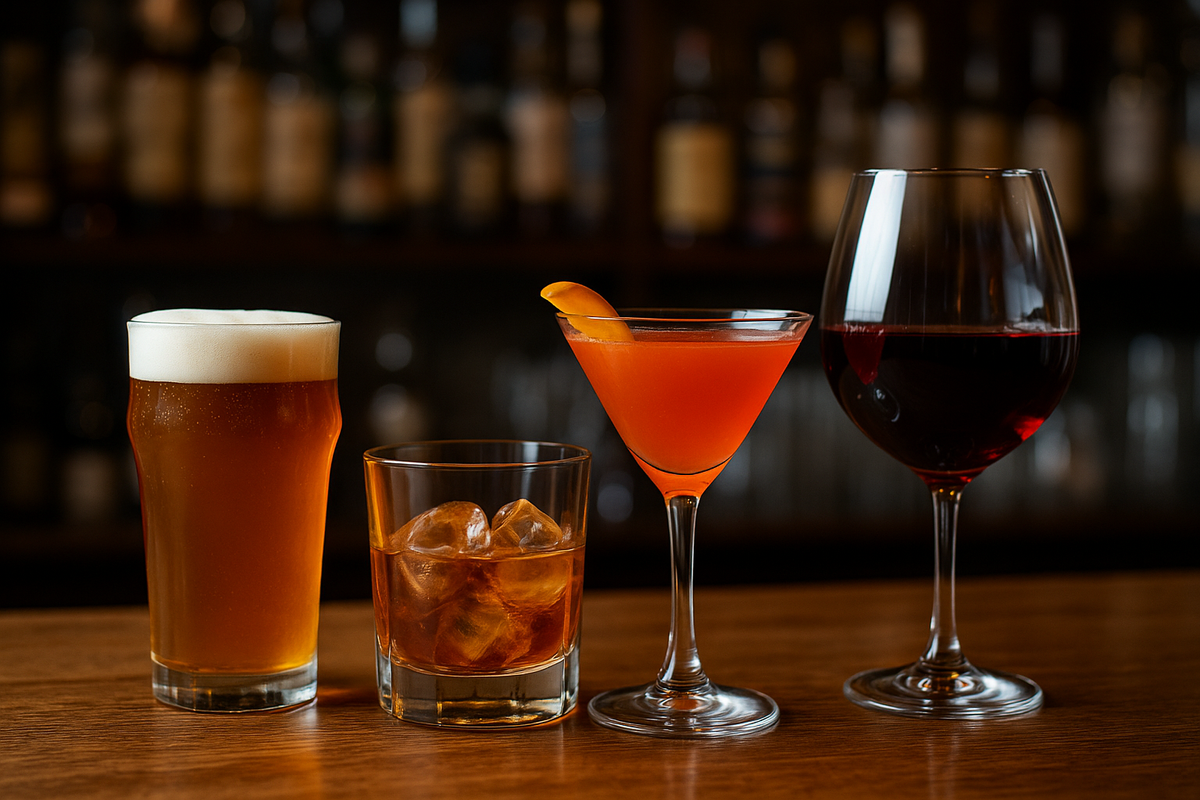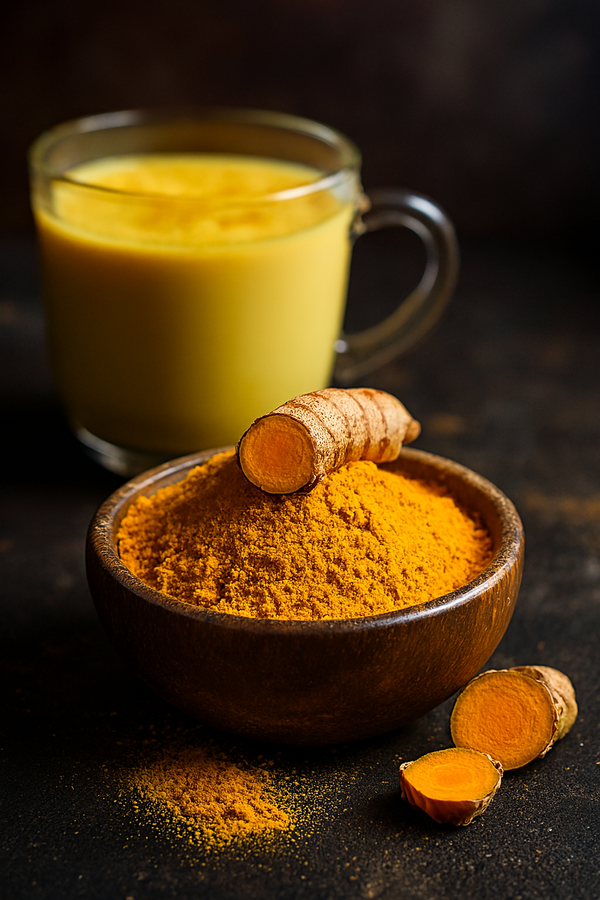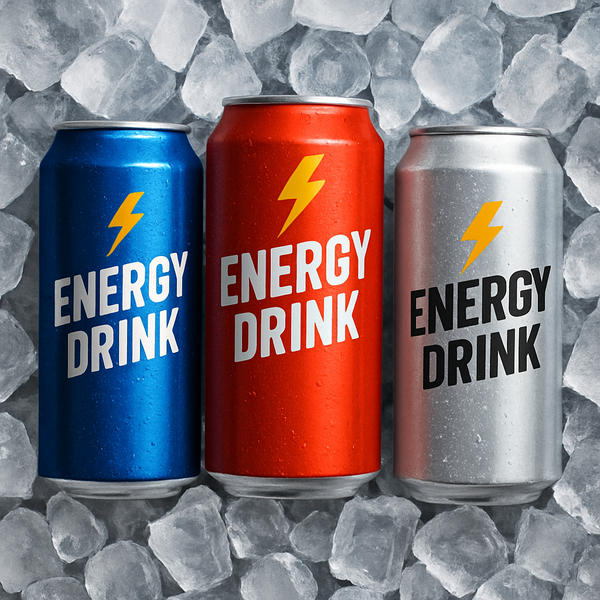Q&A: Is Drinking Less Alcohol as Simple as Choosing NoLo?
No- and low-alcohol (NoLo) drinks are growing in popularity as consumers seek healthier, mindful alternatives to alcohol. This article explores their classification, benefits, risks and role in reducing alcohol-related harm—especially when used as substitutes, not additions.


Take-Home Messages 🔑
|
Section |
Take-Home Message |
|
🍷 Introduction |
NoLo stands for no- and low-alcohol
beverages—typically defined as drinks containing up to 1.2% alcohol by volume
(ABV). This includes alcohol-free, non-alcoholic, de-alcoholised, and
low-strength beers, wines, ciders and spirits. NoLo drinks are gaining
popularity as a response to health trends and rising alcohol content in
beverages due to climate change. |
|
🔍 Understanding NoLo Beverages |
Definitions of “low” and
“no” alcohol vary globally; consumers should read labels carefully to
understand what they are drinking. |
|
❤️ Alcohol Health Risks and NoLo Benefits |
NoLo beverages may retain
the health-promoting compounds of alcoholic drinks while avoiding the harmful
effects of ethanol. |
|
⚠️ Potential Pitfalls of NoLo Products |
NoLo products may pose
risks including overconsumption due to a health halo effect, appeal to youth,
misleading labelling, nutritional drawbacks, social and recovery challenges and
limited affordability for low-income groups. |
|
📢 Recommendation |
World Health Organisation
and South African Food-Based Dietary Guidelines no longer endorse moderate
alcohol consumption; focus is on harm reduction and alcohol-free
environments. |
|
✅ Conclusion |
NoLo can be useful for
reducing alcohol intake, but only when used as a replacement—not in addition
to—alcoholic drinks. |
Introduction 🍷 🍺
Alcohol or ethanol containing drinks made by fermenting and distilling maize, cornstalks sorghum, potatoes, wheat, grapes and other fruits, sugar cane and vegetable waste are of the most consumed beverages worldwide. Breweries have expanded their products to include low alcohol content versions by removal of alcohol from regular beer or by limiting ethanol formation during the beer fermentation (1). Besides beer, no- or low-alcohol (NoLo) drinks (up to 1.2% alcohol volume) also include alcohol-free, non-alcoholic, de-alcoholised and low-strength wines, ciders and spirits. Due to climate change wine’s alcoholic content has been increasing with approximately 1% alcohol by volume (ABV) per decade. This increase has forced the wine industry to come up with solutions such as de-alcoholising wines (2). The NoLo drinks industry is experiencing rapid global growth, driven by evolving consumer preferences toward healthier lifestyles, increased mindfulness around alcohol use and improved product quality (3). While the market—valued at $9.5 billion for NoLo beer alone—is expanding steadily, research on NoLo consumption remains fragmented, theoretically underdeveloped and largely concentrated in the Global North (3).
This rise in interest raises an important public health question: Are NolLo beverages truly healthier alternatives? This article explores their classification, intended benefits, potential risks and their role in promoting safer alcohol consumption behaviours.
Understanding NoLo Beverages 🔍
Classification of the low alcohol content alternatives vary. Low alcohol content beers are divided into alcohol-free beers (AFBs) also called non-alcoholic beer or “near-beer” (in Europe ≤0.5% ABV; in America no-alcohol) and low-alcohol beers (LABs; in Europe less than 1.2%; in America ≤0.5% ABV) (4). For wine the International Organisation of Vine and Wine classifies dealcoholised wine as containing ≤0.5% ABV, partial dealcoholised’ wine 0.5–8.5% ABV. However, these products are also defined as having an ABV of up to 11.0% (as reviewed by (2)).
NoLo products have increased the alcohol industry’s production and markets where alcohol consumption is forbidden for religious reasons (1). However, overall NoLo drinks’ sales are limited compared to the high alcohol content versions (1, 5). For consumers the hope is that NoLo products would replace those with higher alcohol content thereby reducing the overall alcohol consumed, facilitate cutting back on alcohol without standing out at social events and provide alternatives when driving vehicles or operating machinery or when pregnant or using certain medications (1, 2, 5).
Alcohol Health Risks and NoLo Potential Benefits ☠️❤️
Alcohol abuse remains a major global health concern, and ethanol—the active component in alcoholic beverages—is the most widely consumed recreational drug worldwide (6, 7). When metabolised, ethanol is converted to acetaldehyde, a highly toxic and carcinogenic compound. Adverse health effects of alcohol abuse can be divided into biological health hazards (alcoholic liver disease, alcoholic pancreatitis, cancers, malnutrition, cardiac disorders, gastric complications, neurological disorders), foetal development or teratogenic effects (alcohol-related birth defects, alcohol related neurodevelopmental disorders and foetal alcohol spectrum (FAS) defects) and accidents and injuries (6). Reducing alcohol consumption by reducing the amount of alcohol drink contain could ultimately reduce the risk of dying prematurely and the prevalence of these conditions.
Simultaneously, there are evidence of a U-shaped association between alcohol intake with all-cause, non-cancer and cardiovascular disease mortality (8, 9). Therefore, moderate alcohol consumption has better long-term health outcome than excessive alcohol consumption and is slightly better than abstaining.
The small health benefits of alcohol containing beverages are partly attributed to substances other than the alcohol found in these products. Beer contains no fat or cholesterol, and has no added sugars, is high in antioxidants (polyphenols, flavonoids), contains some essential vitamins and minerals and some soluble fibre (10, 11). Similarly, wine does not contain fat or cholesterol or added sugars but contains carbohydrates, organic acids, minerals and polyphenols (resveratrol, anthocyanins and catechins) (12). Therefore, NoLo products could give the nutritious benefits without the energy (which has an energy value of 29.2 kJ/gram or 7.1 kilocalories/gram) and other negative impacts provided by ethanol.
Potential Pitfalls of NoLo Products ⚠️ 🛑
· Due to unclear definitions of ABV and inconsistent international regulations (2), consumers may be misled about the actual alcohol content of NoLo products.
· Consumers may overrate NoLo products as “healthy” and this misleading halo effect can lead to overconsumption and overlooked health risks. Evidence show that when the %ABV or verbal descriptors indicate lower alcohol, consumption increased leading to the high consumption of these products and high alcohol intake (13, 14). Heavy drinkers tend to use NoLo drinks on top of their usual alcohol consumption rather than as substitutes (5).
· NoLo products might appeal to adolescents and young adults. This could normalise the taste and culture of drinking, potentially acting as a gateway to alcohol consumption later (15). Regulations should urgently extend alcohol advertising and access restrictions to include NoLo drinks (16).
· For individuals in recovery or abstaining for religious or medical reasons, NoLo products might blur boundaries, create awkward social dynamics, or be triggering—even if technically alcohol-free. Those with alcohol use disorders should steer clear from these beverages, because they can increase cravings and desires to drink (5).
· Many NoLo drinks—especially mocktails and low-alcohol alternatives—may contain added sugars, artificial sweeteners, or other additives to mimic alcohol’s taste and mouthfeel, potentially impacting health.
· NoLo drinks are often more expensive due to added production steps, smaller-scale manufacturing, innovation to mimic alcohol’s sensory qualities and premium branding. Despite its high cost, Italian millennials are willing to pay for NoLo wine due to its perceived health benefits and alignment with mindful consumption (17). While it is likely that higher prices may deter consumers who are already struggling financially, this effect has yet to be thoroughly examined by researchers. The higher cost may limit access among lower-income populations, making mindful or reduced drinking seem like a luxury and potentially reinforcing health disparities.
Recommendation 📢
Older observational studies suggested that light to moderate alcohol consumption (e.g., one drink per day) might reduce the risk of heart disease, stroke and dementia, but these findings may have been influenced by confounding factors such as healthier lifestyles among moderate drinkers. More recent and robust evidence indicates that even small amounts of alcohol increase the risk of several serious health conditions, including cancer, liver disease, atrial fibrillation and high blood pressure (18). The earlier perceived cardiovascular benefits are now considered likely overstated (18). Therefore, the World Health Organisation (WHO) does not define a safe level of alcohol consumption, stating that any amount of alcohol increases health risks in over 200 health conditions. Its current guidance highlights the dangers of alcohol use during pregnancy (18). Rather than recommending specific intake thresholds, WHO promotes harm reduction through policy measures such as raising taxes, restricting advertising and availability and encouraging alcohol-free environments, with a global target to reduce per capita alcohol consumption by 20% by 2030 (19).
Table:📊 Global Alcohol Consumption Guidelines 🔞 🚸 🤰
|
Country/Organization |
Weekly Limit |
Daily Limit |
Key Notes |
Source |
|
World Health Organisation (WHO) |
No safe level |
No safe level |
Any alcohol consumption increases health risks,
including cancer and cardiovascular diseases. |
|
|
United Kingdom (UK) |
≤14 units/week |
Spread over ≥3 days |
1 unit = 8 g pure alcohol; advised to have
alcohol-free days. |
|
|
United States (US) |
Not specified |
Men: ≤2 drinks/day; Women: ≤1 drink/day |
Emphasis on moderation; less is better for health. |
|
|
Canada |
1–2 drinks/week |
Max 2 drinks/day |
3–6 drinks/week: moderate risk; ≥7 drinks/week: high
risk. |
|
|
Australia |
≤10 standard drinks/week |
≤4 standard drinks/day |
1 standard drink = 10 g pure alcohol; less
consumption reduces risk. |
|
|
South Africa |
No formal limit |
No formal limit |
Focus on reducing harmful use; implementing WHO
guidelines. |
Note: Guidelines for alcohol consumption may vary depending on individual health conditions, age, and personal circumstances. Alcohol should be completely avoided by individuals under the legal drinking age, as well as by women who are pregnant, trying to conceive, or breastfeeding.
The South African Food-Based Dietary Guidelines (SAFBDG) initially included a recommendation on alcohol consumption, advising individuals to "drink sensibly" (20). However, this guideline was later removed due to concerns that it might inadvertently encourage alcohol use, especially given South Africa's high rates of alcohol-related harm (20). The decision to omit the alcohol guideline was also influenced by the presence of other national initiatives addressing alcohol abuse, aiming to avoid redundancy and potential confusion.
In this context, NoLo beverages may offer a practical alternative for individuals seeking to reduce their alcohol intake without foregoing the social experience of drinking. While not risk-free, NoLo products—when used as substitutes rather than additions—could support the spirit of harm-reduction embedded in both the the WHO’s global alcohol strategy and SAFBDG’s shift away from alcohol recommendations, particularly among populations motivated by health, mindfulness or the need for safer choices in specific settings.
Conclusion ✅
NoLo beverages present a potential strategy to reduce overall alcohol intake and associated health risks, particularly when used as substitutes for higher-alcohol alternatives. They retain some of the nutritional benefits of traditional alcoholic beverages without the harmful effects of ethanol. However, their use must be approached with caution. Evidence suggests that NoLo products may unintentionally encourage increased consumption due to misperceptions of safety and they may not be effective in individuals with alcohol use disorders, potentially exacerbating cravings.
For the general population, NoLo drinks can be a helpful tool for moderating alcohol intake if used judiciously and not in addition to regular drinking habits. However, individuals who are pregnant, on certain medications, or have a history of alcohol dependence should avoid these products entirely to prevent possible health risks and relapse triggers. Ultimately, the healthiest approach remains mindful, moderate consumption and awareness of one’s motivations and context when choosing NoLo alternatives.
Reflections 🧘 💡
· Understand your motivations.
Take a moment to reflect on why you drink alcohol or are considering NoLo options. Are you seeking relaxation, social acceptance, a reward, or an escape? Could a flavoured soda, herbal tea or sparkling water provide a similar experience without the risks? Ask yourself whether a NoLo drink might support your goals—or whether it could lead to cravings or overconsumption.
· Review your recent drinking habits.
Look back over the past month and list each occasion when you consumed alcohol. What was the context—celebration, stress, routine or peer influence? How much did you drink and how did it make you feel physically and emotionally? Could you have made a different choice, such as opting for a NoLo or alcohol-free alternative?
· Consider your life stage and responsibilities.
Reflect on whether alcohol—or even NoLo products—is appropriate for you or those in your care. Are you pregnant, trying to conceive, breastfeeding or underage? Do you live with or care for children, teens or individuals in recovery from alcohol dependence? In these cases, abstinence is essential and alcohol—including NoLo products that may contain trace amounts—should be avoided entirely.
Love what you’re reading? Share the knowledge! 📨 Forward this link to a friend who might also enjoy it.
References 📚
1. Brányik T, Silva DP, Baszczyňski M, Lehnert R, Almeida e Silva JB. A review of methods of low alcohol and alcohol-free beer production. Journal of Food Engineering. 2012;108(4):493-506.
2. Anderson P, Kokole D, Llopis EJ. Production, Consumption, and Potential Public Health Impact of Low- and No-Alcohol Products: Results of a Scoping Review. Nutrients. 2021;13(9):3153.
3. Waehning N, Wells VK. Product, individual and environmental factors impacting the consumption of no and low alcoholic drinks: A systematic review and future research agenda. Food Quality and Preference. 2024;117:105163.
4. Montanari L, Marconi O, Mayer H, Fantozzi PJ. Production of alcohol-free beer. Beer in Health and Disease Prevention. 2009;1:61-75.
5. Caballeria E, Pons-Cabrera MT, Balcells-Oliveró M, Braddick F, Gordon R, Gual A, et al. “Doctor, Can I Drink an Alcohol-Free Beer?” Low-Alcohol and Alcohol-Free Drinks in People with Heavy Drinking or Alcohol Use Disorders: Systematic Review of the Literature. Nutrients. 2022;14(19):3925.
6. Pisa PT, Loots DT, Nienaber C. Alcohol metabolism and health hazards associated with alcohol abuse in a South African context: a review. South African Journal of Clinical Nutrition. 2010;23(sup-2):4-10.
7. Murray CJL, Aravkin AY, Zheng P, Abbafati C, Abbas KM, Abbasi-Kangevari M, et al. Global burden of 87 risk factors in 204 countries and territories, 1990–2019: a systematic analysis for the Global Burden of Disease Study 2019. The Lancet. 2020;396(10258):1223-49.
8. Neumann JT, Freak-Poli R, Orchard SG, Wolfe R, Reid CM, Tonkin AM, et al. Alcohol consumption and risks of cardiovascular disease and all-cause mortality in healthy older adults. European Journal of Preventive Cardiology. 2021;29(6):e230-e2.
9. Schaefer SM, Kaiser A, Behrendt I, Eichner G, Fasshauer M. Association of alcohol types, coffee and tea intake with mortality: prospective cohort study of UK Biobank participants. British Journal of Nutrition. 2023;129(1):115-25.
10. Shafreen RMB, Lakshmi SA, Pandian SK, Park YS, Kim YM, Paśko P, et al. Unraveling the Antioxidant, Binding and Health-Protecting Properties of Phenolic Compounds of Beers with Main Human Serum Proteins: In Vitro and In Silico Approaches. Molecules. 2020;25(21):4962.
11. Goñi I, Díaz-Rubio ME, Saura-Calixto F. 28 - Dietary Fiber in Beer: Content, Composition, Colonic Fermentability, and Contribution to the Diet. In: Preedy VR, editor. Beer in Health and Disease Prevention. San Diego: Academic Press; 2009. p. 299-307.
12. Snopek L, Mlcek J, Sochorova L, Baron M, Hlavacova I, Jurikova T, et al. Contribution of Red Wine Consumption to Human Health Protection. Molecules. 2018;23(7).
13. Vasiljevic M, Couturier DL, Marteau TM. Impact on product appeal of labeling wine and beer with (a) lower strength alcohol verbal descriptors and (b) percent alcohol by volume (%ABV): An experimental study. Psychol Addict Behav. 2018;32(7):779-91.
14. Vasiljevic M, Frings D, Pilling M, Marteau TM. Do alcohol product labels stating lower strength verbal description, percentage alcohol‐by‐volume, or their combination affect wine consumption? A bar laboratory adaptive randomised controlled trial. Addiction. 2021;116(9):2339-47.
15. Booth L, Keric D, Bowden J, Bartram A, Sengupta A, Pettigrew S. Zero alcohol products and adolescents: A tool for harm reduction or a trojan horse? Appetite. 2025;205:107582.
16. Bartram A, Mittinty M, Ahad MA, Bogomolova S, Dono J, Brownbill AL, et al. Alcohol advertising in disguise: Exposure to zero-alcohol products prompts adolescents to think of alcohol—Reaction time experimental study. International Journal of Drug Policy. 2025;139:104753.
17. Rai K, Galati A, Chatterjee S, Chaudhuri R, Vrontis D, Migliore G. Uncorking the psychological factors behind habits and NoLo wine preferences. British Food Journal. 2025;127(4):1420-40.
18. Organization WH. No level of alcohol consumption is safe for our health. Geneva: World Health Organization. 2023.
19. Scafato E, Gandin C, Ghirini S, Matone A, Alcol ON, e Doping CND. Alcohol in Europe: Epidemiology, policies and sustainable health targets to fill the gaps of prevention. Nutr Cur. 2024;3:e140.
20. Jacobs L, Steyn NP. “If you drink alcohol, drink sensibly.” Is this guideline still appropriate? South African Journal of Clinical Nutrition. 2013;26:114-S9.
In developing this work, the author utilised ChatGPT-4 to assist with language editing.




